Kenya's Tourist Destinations
Kenya’s Top Tourist Destinations & Safari Experiences in 2025: The Ultimate Guide by Nile Abenteuer Safaris
Kenya Tourism Overview
Why Kenya is Africa’s Leading Safari and Adventure Destination
Few places on earth stir the imagination quite like Kenya. With its vast savannahs teeming with wildlife, dramatic landscapes, sun-soaked beaches, and rich cultural heritage, Kenya stands at the forefront of global tourism. As of 2025, the country welcomes millions of visitors each year, offering a seamless blend of “African safari adventure,” “Big Five wildlife,” “coastal beach holidays,” and “authentic cultural experiences” that rank among the most searched travel keywords worldwide.
The Kenya National Tourism Strategy for 2025–2030 prioritizes the country’s role as the premier safari destination in Africa, with enhanced service excellence, economic inclusion, inclusivity, and sustainability at every turn. Tourism contributes about 12% to Kenya’s GDP, supporting over 1.2 million jobs, and is second only to agriculture as a foreign exchange earner2. Projections for 2025 estimate up to 3 million arrivals and tourism earnings of KSh 560 billion (over USD 4 billion), underscoring the sector’s robust growth.
Kenya’s allure lies in its unique combination of world-class wildlife reserves, pristine beaches, vibrant cities, and over 40 diverse cultures. From the legendary Maasai Mara and its Great Migration, to mountaineering on Mount Kenya and leisure on the powdery sands of Diani Beach, the breadth of experiences caters to luxury travelers, families, adventurers, and culture-seekers alike.
Table: Top Destinations in Kenya (2025) with Key Highlights
Destination | Key Highlights | Best Time to Visit | Signature Experiences |
|---|---|---|---|
| Maasai Mara National Reserve | Big Five, Great Migration | July–October | Game drives, Balloon Safaris |
| Amboseli National Park | Elephant herds, Kilimanjaro views, Maasai culture | June–October | Game drives, Photography |
| Tsavo East & West National Parks | Red elephants, lava landscapes, Mzima Springs | June–October, Jan–Feb | Wilderness safaris, Camping |
| Lake Nakuru National Park | Flamingos, rhinos, scenic viewpoints | July–Oct, Dec–Apr | Birding, Game drives |
| Nairobi National Park | City-edge safari, rhinos, giraffes | Year-round, best Jun–Oct | Half/full day safaris |
| Aberdare National Park | Treetop lodges, waterfalls, rare species | June–Sep, Jan–Feb | Forest hikes, Nocturnal safaris |
| Hell’s Gate National Park | Cycling, hiking, geothermal features | Jan–Mar, Jun–Sep | Biking, Rock climbing |
| Samburu National Reserve | Samburu ‘Special Five’ wildlife, rugged terrain | June–Oct, Jan–Feb | Game drives, Culture tours |
| Mount Kenya National Park | Alpine trails, glaciers, diverse wildlife | Jan–Mar, Jun–Oct | Trekking, Scenic photography |
| Lamu Island | UNESCO heritage, Swahili culture, car-free charm | Dec–Mar, Jul–Sep | Walking tours, Dhow cruises |
| Diani Beach | White sand, coral reefs, water sports | Dec–Mar | Snorkeling, Kite surfing |
| Watamu Marine National Park | Coral reefs, dolphins, turtles | Nov–Apr | Diving, Marine safaris |
Each destination listed above offers an array of activities and scenes tailored for photographers, adventure-seekers, families, and couples, cementing Kenya’s place among the world’s “best adventure travel destinations,” “luxury safari holidays,” and “cultural tourism hot spots”.
Kenya’s Climate and the Best Time to Visit
Kenya’s equatorial location ensures generally pleasant weather year-round, but regional variances exist:
- Coastal regions (Diani, Watamu, Lamu): Tropical and humid, with December–March as the driest and sunniest period, perfect for “Kenya beach holiday” searches.
- Savannah and Rift Valley (Maasai Mara, Amboseli, Tsavo, Laikipia): Warm and sunny in the dry season (June–October, January–February), with short rains in November and long rains March–May—often considered “shoulder/low season” for budget safaris and fewer crowds.
- Highlands (Mount Kenya, Aberdares): Cool, with chilly nights; year-round hiking and forest treks are best June–September and January–February.
Wildlife safaris are best June–October, with July–September peak for the Great Migration in the Mara. The green seasons (November–March) attract birders and yield lusher landscapes, excellent for photography but with more unpredictable rains.
Kenya Visa and Travel Requirements
Kenya has greatly simplified entry for tourists by expanding visa-free access for all African countries and most Caribbean nations as of July 2025. In addition:
- Travelers from other regions use the streamlined Electronic Travel Authorization (ETA) or eVisa system, which typically processes in 24–48 hours.
- Multiple entry and digital nomad visa options are now available to encourage longer and repeat stays.
- Yellow fever certification may be required for travelers coming from endemic zones.
- Always check latest travel health advice, ensure passport validity of at least six months, and have travel/medical insurance
The Maasai Mara National Reserve
Kenya’s Top Safari Destination
Overview and Signature Experiences
The Maasai Mara stands as Kenya’s jewel, consistently securing top search spots such as “Kenya safari tours,” “Big Five Kenya,” and “Great Migration safari 2025.” Located in the southwest, adjacent to the Serengeti, the Mara is world-renowned for:
- Hosting the Great Wildebeest Migration (July–October), over 1.5 million wildebeests, zebras, and gazelles crossing crocodile-filled rivers.
- Easy sightings of the Big Five, lion, leopard, elephant, rhino, buffalo, plus cheetahs, hyenas, hyrax, and over 500 bird species.
- Epic landscapes of golden grasslands, acacia trees, and dramatic sunsets; perfect for “safari photography Kenya.”
Unforgettable Activities
- Guided Game Drives: Led by expert rangers, these offer up-close wildlife encounters throughout the day.
- Hot Air Balloon Safari: Float at sunrise for breathtaking aerial views, followed by a champagne bush breakfast, a “once-in-a-lifetime” Kenya experience.
- Guided Bush Walks & Night Drives: Explore on foot with Maasai guides or seek nocturnal predators at dusk.
- Cultural Encounters: Visit Maasai villages for traditional dances, crafts, and insights into a proud pastoral community.
When to Visit and How to Plan
Best time for Great Migration & Big Cats: July–October. Flexible dates in August offer the highest chance to witness dramatic river crossings (a bucket-list spectacle). Early booking is essential, as peak season sees lodges and camps fill quickly.
Accommodation: Ranges from luxury tented camps with infinity pools and spa treatments (e.g., Angama Mara, Mara Bushtops, Cottar’s 1920s Camp) to cozy bush camps and mid-range lodges. Group joining tours make safaris affordable and sociable for solo travelers or families.

Amboseli National Park
Elephants and Kilimanjaro Views
Amboseli is best known for its legendary herds of elephants, Africa’s largest, and stunning backdrops of Mount Kilimanjaro. As the most Googled destination for “Kenya elephant safari,” Amboseli offers:
- Spectacular elephant encounters: Over 1,800 elephants, including matriarchal herds with adorable calves.
- Sweeping savannah, marshes, and Observation Hill for panoramic views.
- Other wildlife: lions, leopards, cheetahs, hyenas, giraffes, buffalo, hippos, and over 400 bird species.
- Birders’ paradise: Flamingos and pelicans join migrants in the rainy season.
- Maasai culture experiences: Village visits, beadwork, and storytelling.
Recommended activities: Game drives at sunrise and sunset, hot air balloon rides, wildlife photography, and Maasai community tours.
Best time to visit: June–October and January–February for dry skies and concentrated wildlife; green season (November–March) for lush scenery and migratory birds. New eco-lodges and sustainability projects have strengthened Amboseli’s reputation as an eco-friendly safari hotspot.
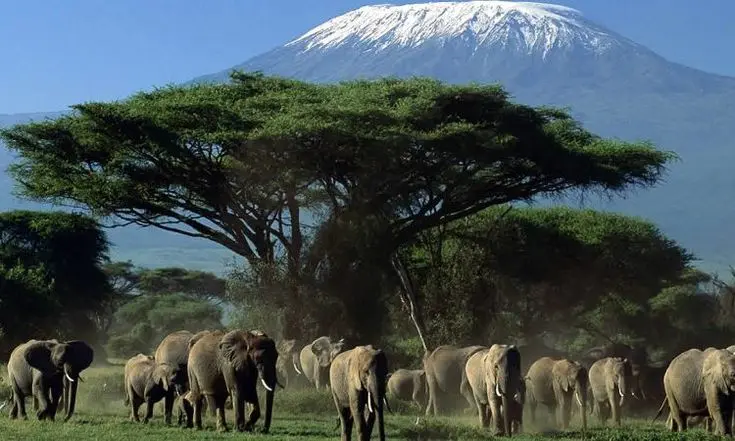
Tsavo East & Tsavo West National Parks
Wild, Largest, and Diverse
Together, Tsavo East and Tsavo West form Kenya’s largest protected wilderness, famous with adventurous travelers seeking “remote Kenya safaris,” “red elephants,” and “lava landscapes.”
- Tsavo East: Vast semi-arid plains, Galana River, Lugard Falls, Aruba Dam. Known for “red elephants” (stained by ochre soil), lions, giraffes, leopards, zebras, plus abundant birds.
- Tsavo West: Rolling hills, dormant volcanoes, lava flows, and the lush oasis of Mzima Springs, where hippos and crocodiles are viewed from underwater chambers. Also spot rhinos, serval cats, rare birds, and migratory bush elephants.
Signature activities: Game drives, walking safaris (with Maasai guides), hot air balloon safaris, and night drives in select areas. Tsavo offers luxury lodges, tented camps, and camping options for all budgets.
Adventure seekers can try rock climbing, lava field hikes, and camping under the stars in true wilderness.
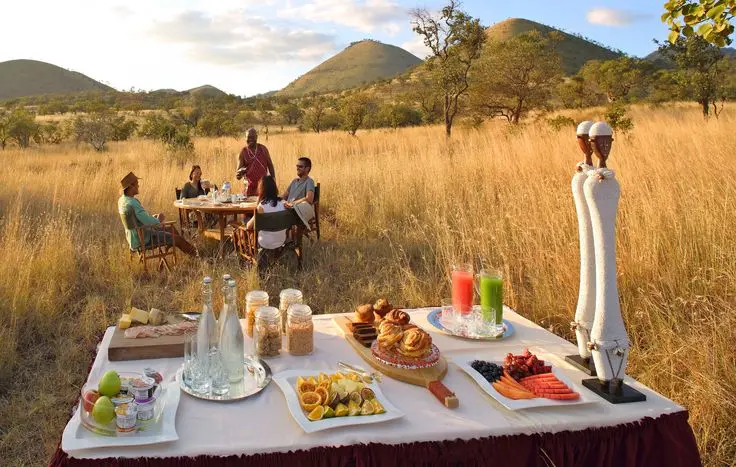
Lake Nakuru National Park
Flamingos, Rhinos, and Panoramic Vistas
Lake Nakuru National Park is a birdwatcher’s and wildlife photographer’s paradise:
- Flamingos: At times, up to a million pink flamingos turn the lake’s shores an otherworldly hue. Best numbers between July–October and December–April, timed with ideal water levels and algae blooms.
- Rhinos: Stronghold for both black and white rhinos; see the endangered Rothschild’s giraffe.
- Diverse wildlife: Lions, leopards, buffalos, baboons, warthogs, and over 400 bird species.
- Key viewpoints: Baboon Cliff, Lion Hill, and Out of Africa lookout offer iconic panoramas.
Safari highlights: Early-morning game drives, picnic sites with lake views, birding walks, and waterfall hikes. Proximity to Nairobi makes it a favorite for weekend safaris and “photography tours Kenya.”
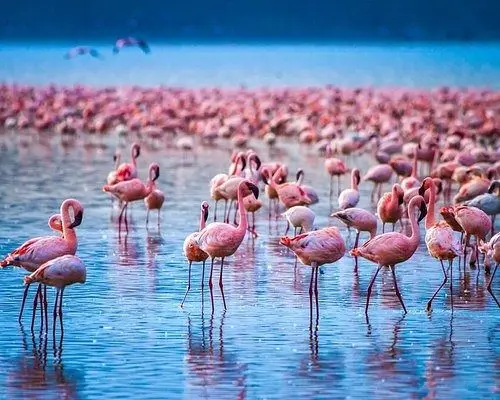
Nairobi National Park
Safari in the Shadow of the City
Nairobi National Park is a unique wildlife sanctuary right next to the Kenyan capital, often topping “safari near Nairobi airport” and “city-edge safari” searches.
- Wildlife: Home to “Big Four” (lion, leopard, buffalo, rhino, no elephants here), plus giraffes, zebras, antelopes, with over 400 bird species.
- Iconic photo opportunities: Wildlife against the Nairobi skyline, a truly modern safari.
- Conservation hotspots: Visit the David Sheldrick Elephant & Rhino Orphanage and the Giraffe Centre.
- Activities: Half-day, full-day, walking safaris; birdwatching; educational tours for families.
Why visit? Easy access from city hotels or airport. Perfect for travelers short on time but hungry for wildlife encounters.
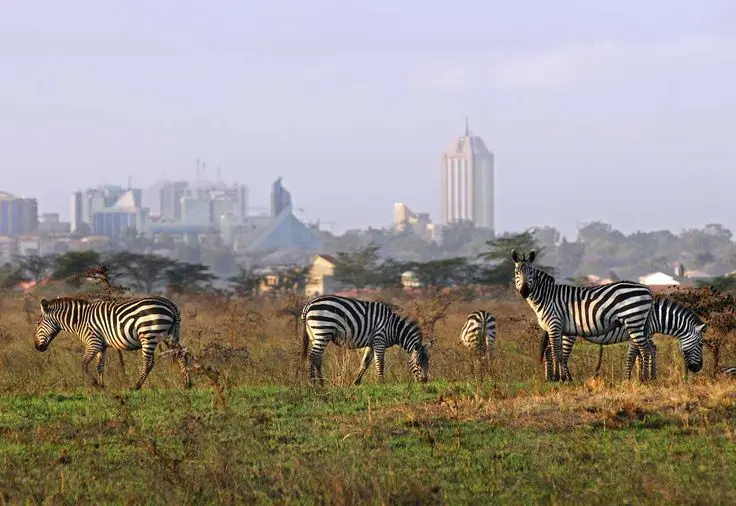
Aberdare National Park
Lush Forests, Waterfalls, and Treetop Lodges
Set in Kenya’s central highlands, Aberdare is a high-altitude escape from the savannah:
- Landscape: Mist-draped forests, bamboo groves, open moorlands, and dramatic waterfalls (Karuru, Gura).
- Wildlife: Elephants, buffaloes, leopards, black rhinos, rare bongos, hyenas, colobus monkeys.
- Unique lodgings: Stay overnight at Treetops or The Ark, lodges built above floodlit waterholes, offering armchair wildlife viewing, especially of elephants and rhinos at night.
- Activities: Forest hikes, trout fishing, birding (250+ bird species), and highland adventures.
- Historical note: Queen Elizabeth was staying at Treetops Lodge when she learned of becoming Queen in 1952, a draw for lovers of royal history.
- Best time: Drier months (June–September) or January–February for cool, crisp hiking. Nights are chilly, bring warm clothes.
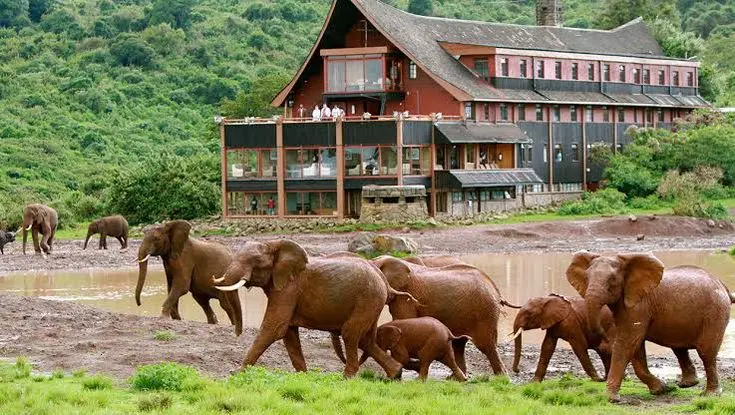
Hell’s Gate National Park
Adventure Activities and Geological Wonders
Hell’s Gate is famed as Kenya’s center for “adventure activities,” “cycling safaris,” and “rock climbing” in breathtaking volcanic landscapes.
- Geology & Scenery: Towering cliffs, gorges, steam vents, Fischer’s Tower, Central Tower, and Obsidian Caves.
- Wildlife: No large predators, so visitors can hike or bike safely among zebras, giraffes, buffaloes, and antelopes.
- Activities: Cycling, guided hikes through canyons, hot springs, geothermal spa, and birdwatching (including bearded vultures).
- Film trivia: Inspired Disney’s “The Lion King” settings.
- Proximity: Near Lake Naivasha; perfect for day trips from Nairobi or combined with other Rift Valley lakes.

Samburu National Reserve
The ‘Special Five’ and Off-the-Beaten-Path Safaris
Samburu offers a wilder, more exclusive “off-the-beaten-path safari” in northern Kenya.
- Unique wildlife: Home to the Samburu “Special Five”: Grevy’s zebra, Somali ostrich, Beisa oryx, gerenuk, and reticulated giraffe, species not found in the south.
- Also hosts elephants, lions, cheetahs, leopards, crocodiles, hippos, and over 450 bird species.
- Distinctive landscape: Doum palms and acacia woodlands line the banks of the Ewaso Ng’iro River.
- Activities: Game drives, bird-watching, riverbank sundowners, camel safaris, and immersive Samburu cultural visits.
- Luxury and eco-lodges offer serene stargazing and evening wildlife sightings.
Best time to visit: Drier months (June–October, January–February) yield easier wildlife sightings along the riverbanks.

Mount Kenya
Africa’s Second Highest Peak and Trekking Paradise
Mount Kenya National Park is the centerpiece for “mountain adventures in Kenya,” “Africa’s second-highest summit,” and “alpine trekking” searches.
- Peaks: Batian (5,199m, technical climb), Nelion (5,188m, technical), Point Lenana (4,985m, accessible without ropes for strong trekkers).
- Hiking routes: Sirimon (gentle, wildlife-rich forest), Chogoria (spectacular scenery, waterfalls, lakes), Naro Moru (fastest, steepest), Burguret (challenging, rarely used).
- Landscape: Rainforest and bamboo, moorland, glaciers, lakes, streams, and rare Afro-alpine flora.
- Wildlife: Elephants, antelopes, monkeys, and diverse birdlife.
- Activities: High-altitude trekking, photography, fishing, and village visits. Treks range from 3–7 days with comfortable huts and tented camps.
- Best season: January–March and June–October for dry trails and clear summit views.
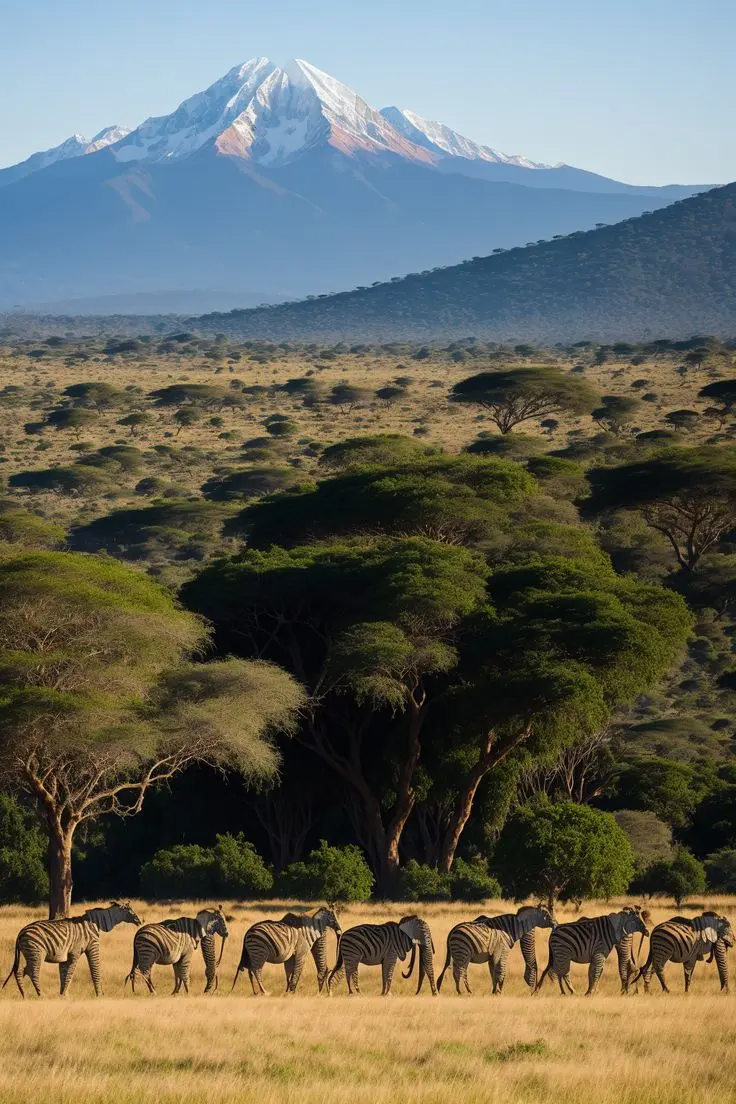
Lamu Island
UNESCO Swahili Heritage and Timeless Relaxation
Lamu, on Kenya’s north coast, is a timeless world of Swahili heritage and “car-free island charm.” Its UNESCO World Heritage Old Town is the oldest and best-preserved Swahili settlement in East Africa.
- Cultural richness: Winding alleys, intricately carved Arabic doors, bustling souks, centuries-old mosques, and historic stone mansions.
- Classical transport: Donkey carts and dhows, no cars allowed, lend a serene, laidback atmosphere.
- Signature experiences: Walking tours, Lamu Fort, Swahili House Museum, dhow cruises at sunset, culinary tours, and attending traditional festivals.
- Relaxation: White sand beaches, yoga retreats, and boutique accommodations in restored mansions.

Diani Beach: Kenya’s Tropical Paradise
Consistently rated among “Africa’s best beaches,” Diani blends “white sand luxury” with adventure and relaxation:
- Setting: Over 10 miles of powdery sand and turquoise water fringed by palm trees.
- Activities: Snorkeling, diving, kite surfing, dolphin-watching, jet skiing, skydiving, camel rides, and beach volleyball.
- Family- and couple-friendly: Trendy beach bars, seafood restaurants, and lively nightlife.
- Nearby gems: Visit Tiwi Beach (snorkeling), Wasini Island, or Kisite Marine Park for dolphins and turtles.
- Where to stay: Top-rated boutique resorts, family villas, and affordable guesthouses are all close to the beach.
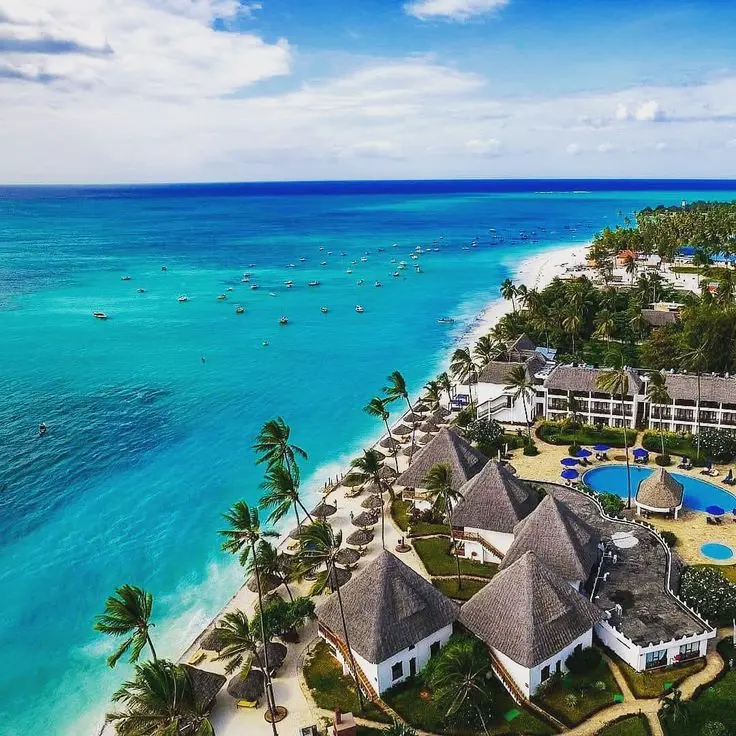
Watamu Marine National Park
Underwater Wonderland and Coastal Retreat
Watamu is a hidden gem for “marine life Kenya,” “coral reef diving,” and “sustainable tourism.”
- Park features: Vibrant coral gardens, sea turtles, dolphins, a variety of fish, and seasonal whale watching.
- Activities: Scuba diving (PADI centers available), glass-bottom boat rides, deep-sea fishing, snorkeling, and eco-tours of Arabuko Sokoke Forest.
- Community conservation: See turtle protection projects and support local seaweed farming initiatives.
- Relaxation: Unspoiled beaches, mangrove-lined estuaries, wellness retreats, and boutique lodges with ocean views
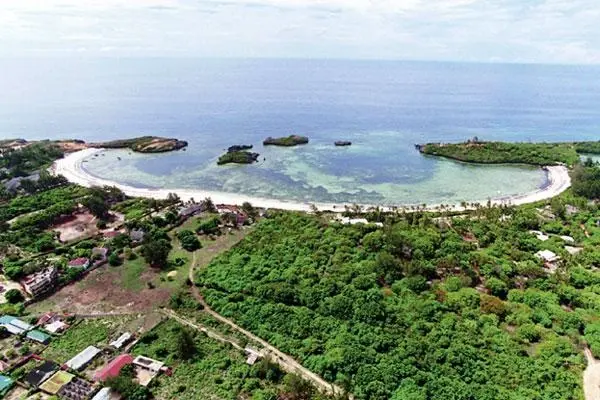
Adventure Activities in Kenya
Thrills Beyond Wildlife Safaris
Kenya is Africa’s top destination for “adventure travel,” with options including:
- Hot air balloon safaris: Unmatched bird’s-eye views over the Mara or Amboseli, perfect for luxury travel and honeymoons.
- Hiking & trekking: Mount Kenya, Aberdare moorlands, Menengai Crater, Chyulu Hills, and Sacred Kaya Forests.
- Cycling and rock climbing: Hell’s Gate National Park.
- Camel safaris and horseback riding: Laikipia, Samburu, and Lewa conservancies.
- Photography expeditions: Guided by pro wildlife photographers in Mara, Samburu, and Amboseli.
- Kite surfing & diving: Diani, Watamu, and Malindi beaches.
- Cultural immersion: Stay with Maasai or Samburu communities, learn beadwork, herding, and traditional cooking.
Scenic Landscapes and Photography Hotspots
Kenya is a landscape photographer’s dream:
- The Great Rift Valley: Gaze over escarpments from viewpoints along Nairobi–Nakuru highway, with lakes, volcanoes, and dramatic horizons (don’t miss sunrise for golden light).
- Mount Kenya & Aberdares: Jagged snow-capped peaks, lush forests, deep valleys.
- Maasai Mara: Endless plains, Mara River, and golden hour sunsets.
- Amboseli: Kilimanjaro’s snowy summit as a backdrop to elephants.
- Lake Nakuru: Pink flamingo bands and panoramic cliff viewpoints.
- Lamu Old Town: Narrow alleys, ornate doors, and bustling marketplaces.
Wildlife Highlights: The Big Five and Beyond
A Kenya safari guarantees encounters with the world’s most cherished animals:
- Big Five: Lion, elephant, leopard, buffalo, rhino (best spotted in Mara, Amboseli, Tsavo, Nairobi, and Samburu).
- Great Migration: Over 1.5 million wildebeests and zebras crossing the Mara River each year.
- Unique fauna: Grevy’s zebra, reticulated giraffe, Somali ostrich, Beisa oryx (the ‘Samburu Special Five’).
- Birdwatching paradise: Over 1,000 species nationwide, including flamingos, vultures, kingfishers, and the lilac-breasted roller, the national bird.
Cultural Sites and Community Tourism
Experience Kenya’s soul through:
- Maasai, Samburu, Turkana, Luo, Swahili, and Kikuyu traditions: Village stays, cultural festivals, music and dance, craft workshops, and authentic Kenyan cuisine.
- UNESCO World Heritage sites: Lamu Old Town, Fort Jesus (Mombasa), Sacred Kaya Forests, Lake Turkana fossils.
- Festivals: Annual Kenya Music and Cultural Festival, Lamu Cultural Festival.
Community-based tourism is strongly promoted, travelers are encouraged to support local livelihoods and conservation projects for ethical, impactful journeys.
Travel Tips and Safety in Kenya
Travel Logistics:
- Domestic flights: AirKenya, Kenya Airways, and numerous private carriers connect Nairobi with the Mara, Amboseli, coast, and secondary destinations, ideal for maximizing your time.
- Road: Roads to key parks are mostly paved, but 4x4s are necessary for remote areas and during rainy months. Reliable private transfer, shuttle, or organized tour is advised.
- Entry: Jomo Kenyatta International Airport (Nairobi) is the main gateway; Moi International Airport (Mombasa) for coast. Immigration is fast with eVisa/ETA for non-African visitors.
- Health: Carry proof of yellow fever vaccination (if applicable), pack malaria prophylaxis for lowland safaris, and ensure routine vaccines are up-to-date. Kenya has robust medical facilities in Nairobi and Mombasa.
Safari Safety:
- Always follow your guide’s instructions in wildlife areas.
- Do not exit safari vehicles except at designated spots.
- Keep a respectful distance from animals.
- Don’t leave valuables unattended; major parks and cities have visible tourist police.
Packing Essentials:
- Lightweight, neutral clothing; layers for cool mornings/nights.
- Sunhat, sunscreen, sunglasses.
- Mosquito repellent and antimalarials.
- Binoculars and a camera with zoom lens.
- Reusable water bottle and sturdy walking shoes.
Accommodation and Hospitality
Kenya’s Best Safari Lodges and Beach Resorts (2025)
Kenya’s hospitality caters to every taste:
- Luxury lodges and eco-camps: Angama Mara, Mara Bushtops, Sanctuary Kitirua Plains, Saruni Samburu, Tawi Lodge, and the iconic Giraffe Manor (where giraffes join you for breakfast!) represent the pinnacle of comfort, service, and sustainability.
- Treetop lodges: Historic Treetops and The Ark in Aberdares deliver legendary animal viewing at night.
- Beach resorts: The Sands at Nomad (Diani), Watamu Beach Cottages, and Jacaranda Beach Resort cater to sun-seekers, divers, and families.
- Boutique and cultural stays: Swahili mansion guesthouses in Lamu, Maasai homestays, and eco-lodges in community conservancies offer authentic, immersive options.
Booking tip: For the Great Migration, holiday seasons (December–January, Easter), and major events, book at least 6–12 months in advance. Shoulder and green seasons offer savings and a quieter experience.
Transportation and Logistics: Getting Around Kenya
- Flights: Fastest for traveling between Nairobi and primary safari parks or coastal resorts.
- Road transfers: Comfortable safari vehicles with experienced drivers are included in most tour packages.
- Self-drive: 4x4s are available for adventurous travelers but require navigation skills and local familiarity.
Local Transport: Matatus (minibuses) are economical for short journeys but can be crowded; hire taxis or rideshare for comfort in cities.
For remote destinations (e.g., Samburu, Laikipia, western lakes), organized tours or air transfers are strongly recommended for safety and convenience.
Kenya Tourism Statistics and Trends (2025)
What to Expect
Strong Growth and Innovation
- Projected tourism receipts for 2025: KSh 560 billion (~USD 4 billion), continuing a double-digit rebound from pandemic lows.
- International arrivals: Forecast to reach 3 million; United States, Uganda, Tanzania, UK, and growing Asian markets are key source markets.
- Meetings, Incentives, Conferences, and Exhibitions (MICE) tourism is a powerful growth area, accounting for over 25% of arrivals.
- New investments: Cutting-edge hotels, expanded air routes, digital innovation (24-hour eVisa, real-time wildlife tracking), and eco-certification for tour operators.
Sustainability and Community Focus
- Ban on single-use plastics enforced in protected areas.
- Expansion of community-run conservancies and involvement of local communities in guiding, hospitality, and conservation.
- Electric vehicle pilot programs in national parks; focus on renewable energy at lodges.
Trendy Traveler Preferences
- Experiential travel: Wellness safaris, culinary journeys, photography expeditions, and immersive village stays.
- Eco-conscious travel: Emphasis on responsible tourism, animal welfare, and carbon-neutral safaris.
- Tech-savvy bookings: Real-time virtual tours, VR previews, and customized itineraries.
Why Book Your Kenya Adventure with Nile Abenteuer Safaris?
Choosing Nile Abenteuer Safaris ensures personalized attention, expert guides fluent in local culture, access to the widest selection of safari and adventure packages, and a deep commitment to responsible, sustainable travel. We offer:
- Flexible itineraries for solo travelers, families, couples, or large groups.
- Expert planning for Great Migration safaris, luxury honeymoons, family-friendly adventures, and culture-rich escapes.
- Dedicated support before and during your trip, including health and safety guidance.
- Commitment to supporting conservation and local communities, travel that gives back.
Let Nile Abenteuer Safaris make your Africa dream trip a reality, where adventure, wildlife, culture, and natural beauty await every traveler in magical Kenya.